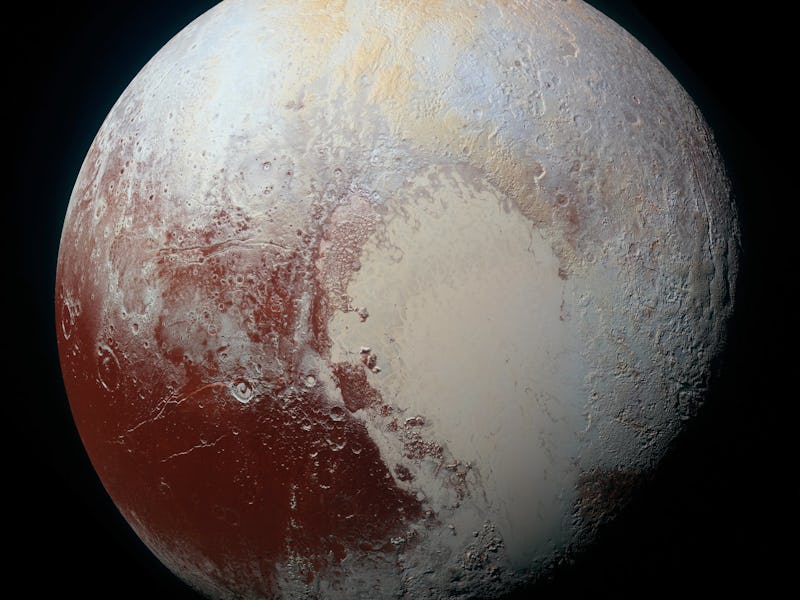You just can’t keep a good Pluto down. Even after its (admittedly justified) demotion to dwarf planet status exactly 10 years and four days ago, Pluto is proving itself full of surprises. And one curious bit of data from New Horizons’ flyby of the former ninth planet has revealed a strange little puzzle: Pluto is emitting X-rays, and it’s doing it at an intensity that can’t quite be explained.
NASA’s New Horizons spacecraft flew by Pluto in 2014 and 2015, which astronomers took as an opportunity to point every conceivable telescope they had toward the dwarf planet. One such telescope was at the Chandra X-Ray Observatory, which imaged Pluto in the X-ray spectrum. As astronomer Scott Wolk acknowledges in a statement on these findings, there wasn’t really any reason to think Pluto would emit X-rays at all — no known objects in our solar system beyond Saturn do so — and so there was some question of whether it was even worth having Chandra look.
Well, thank goodness it did, because now there’s a riddle to figure out. A cold, rocky, and non-magnetic body like Pluto shouldn’t normally create X-rays, but it might be able to do so in interaction with the solar wind, the steady stream of charged particles the Sun emits. That would work fine, as Pluto’s atmosphere emits enough gas for that to work — except there doesn’t appear to be enough solar wind to create X-rays as bright as the ones Chandra detected.
So what could be causing this? Well, it’s possible that Pluto has a long tail of gas trailing behind it, like a comet, even though New Horizons didn’t detect a tail of that magnitude. Or, as NASA explains, interplanetary magnetic fields might be creating more concentrated beams of solar wind that are hitting Pluto. We don’t know for sure, but it suggests there are unexpected mysteries afoot in the Kuiper Belt, the massive, distant conglomeration of dwarf planets, comets, and small objects that Pluto calls home. New Horizons will have a chance to maybe shed some light on all this in the next phase of its mission, as it speeds through the Kuiper Belt for the next three years en route to one of those smaller objects.
